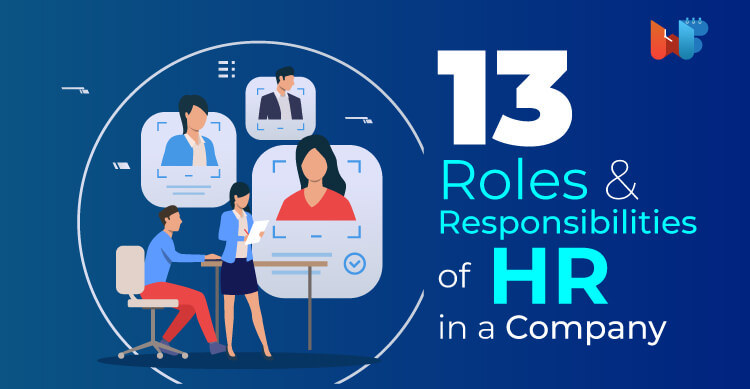
What does BMW and 90% of Fortune 500 companies have in common? They all use Microsoft’s cloud computing. The service, known as Microsoft Azure (earlier known as Windows Azure) has been used by many corporations since its launch in 2010 to manage data, develop applications, perform predictive analysis and much more on the cloud.
In this post we will explain on what exactly is Microsoft Azure, how it is used by businesses across the globe to save time and costs. We will also touch upon cloud computing as a market broadly and how Microsoft Azure fits in this $210 billion market.
What is Cloud Computing?
Cloud services were the buzzword in business and IT industry about a decade ago. Whether your work is related to technology or not, you have definitely heard of cloud computing. Cloud computing is model to provide sharable computing resources such as storage, applications, software, services etc. that can be used on-demand.
Cloud computing was envisioned in the 1960s as ‘ Intergalactic Computer Network’. However, the idea only took off after internet could offer sufficient bandwidth to access this service in the late 1990s.
SalesForce.com was the first one to offer enterprise applications through website in 1999. This paved the way for cloud services and many players small and big jumped into the market.
Amazon Web services was among the first few to offer web based services that could be accessed by anyone via internet.
Soon a suite of services were offered to business. Data storage, application development and software applications could all be hosted in the cloud. This meant that companies no longer needed to own tools and software. Instead, these were offered on a pay-as-you-use basis or Software as a service (SaaS).
Take cloud storage for example. Earlier companies had to buy or lease their servers to store their own data. This is known as on-premise computing. With cloud storage data is stored in cloud; that is, in the servers owned, managed and maintained by cloud service providers.
This is also known as Infrastructure as a Service (IaaS) as it is essentially renting out just the required space needed for your data storage.
What is Microsoft Azure?
Microsoft already had a huge share of enterprise software market by 2007. Most of the big corporations were already using Microsoft’s Exchange E-mail software offered as SaaS (Software as a Service). In 2008, Microsoft announced its cloud service Microsoft Azure and launched it in 2010.
With Azure, Microsoft envisioned to offer much more than SaaS. With Microsoft Azure developers could develop, deploy and manage applications; create Virtual Machines; create and host websites; develop applications for mobile devices.
Microsoft has added many more services with each passing year. Here is what Microsoft Azure has to offer to companies all sizes and at any location.
Azure offers hundreds of features and services. They can be classified broadly under four categories:
1. Infrastructure as a Service (IaaS)
This is simply providing physical infrastructure on a shared basis. Azure provides computing infrastructure such as server, networking and data center management as a service. Virtual Machines are also a service under IaaS.
Examples of services provided under LaaS are – storage, backup & recovery of data, high-performance computing, website hosting, big data analytics etc. All of these require a high computation power and additional hard-disk space. This can be easily provided by LaaS providers.
Additionally LaaS gives the flexibility of scaling up or down the infrastructure as per the demands of business. This means that companies only pay for what they use and do not have to block resources in extra capacity.
2. Platform as a Service (PaaS)
In addition to resources provided under IaaS, this provides the development tools, database management systems and middleware. This gives developers tools to build, deploy and manage applications. Azure manages all the software licenses and application infrastructure so that you can concentrate on developing amazing applications.
From building to testing and updating; PaaS supports you throughout while cutting coding time and adding capabilities to your development teams.

3. Software as a Service (SaaS)
SaaS goes a step further and provides cloud-based apps over internet. Microsoft Azure manages all the software and hardware requirement for app. Users can connect to the app via the internet and companies are billed on pay-as-you-go basis.
Microsoft Office 365 is an example of SaaS. Customer Relationship Management software and ERP are other examples that you might be familiar with.
4. Mobile Service (mBaaS)
This is similar to PaaS. The only difference being that mBaaS or mobile backend as a service give tools to build and deploy application meant for mobile devices.
There are hundreds of services that Microsoft Azure is offering under these broad headings. Here are a few important categories to give you an idea of how Microsoft Azure services can be used for:
1. Database Services
Manage, store and secure data in a business. Azure provides service to manage SQL database so that you can concentrate on using the data rather than managing it.
Data backup, disaster recovery and data migration are some of the other services that are offered under database management services.
2. Computing Services
Azure can host Virtual Machines for processes that require super computing power. Azure supports up to 9 operating systems and gives a choice of various languages to build, deploy and manage applications.
3. Analytics
With Azure, businesses can stream and maintain big data from smart devices. Services are available for predictive analysis, machine learning and statistical modeling to help businesses make sense of the stream of big data coming in.
4. Media
Companies such as NBC sports, Xbox and Fuji Television Network are using Microsoft Azure’s services to encode and stream video at a massive scale. Azure’s Media services allow companies to deliver live and on-demand content with any scalability.
5. AI & Machine Learning
Azure offers a plethora of services under AI and Machine Learning so that clients can build and manage predictive analysis, build and scale bot services, train deep learning and neural networks.
Some of the services under this are Azure Batch AI, Machine Learning Studio, Azure Bot Service and Azure Data bricks.
These are just some of the broad categories to services available in Microsoft cloud. Some of the other categories are Database Management, Internet of things, Migration, Mobile, Networking, Security, Storage, Web, Developer Tools and Management Tools.
As you can see Azure offers everything a business could possibly need. Whether it’s a simple ERP to run your day to day business or complex machine learning to develop cutting edge apps; Microsoft Azure can support you in its services under IaaS, PaaS and SaaS.
How does it work?
Companies that have all their data and processes up and running in cloud call themselves ‘cloud-native’. From application building to machine learning companies are uploading everything to cloud. So how is running businesses in the cloud made possible?
Cloud computing is enabled by virtualization technology. It allows a CPU to run multiple operating systems (OS) at once. This process performed at a massive scale at Microsoft Datacenters is what makes cloud computing possible.
Here is a video that clearly explains how Microsoft Azure works on Virtualization technology.
The Cloud Computing Market.
The cloud service market is set to grow to $555 billion by 2020 according to Allied Market Research. SaaS is expected to grow the fastest as a segment of cloud services. With adoption of cloud services by all companies large and small and increasing demand for technology services across all industries, cloud services are expected to grow at a fast pace in coming years.
Big players such as Amazon, Google, and IBM are all in the race along with Microsoft Azure. Amazon Web Services is the market leader with 47% share in the market. Microsoft Azure is still behind with little over 10% market share.
However Microsoft is growing at a pace faster than Amazon is expected to catch up soon. In fact, Microsoft Azure has grown at a triple digit growth rate since its launch. Google Cloud Platform is another big player with a much smaller share of 4% as of now.
The cloud services space is expected to remain competitive with each player aggressively adding data centers and dropping prices. Microsoft is set to capture a major portion of this market which is still in its early development stage. Each player is launching cutting edge capabilities in order to stay ahead in the game.
Because of the following advantages the adoption of Azure and other cloud services will only grow in the coming years:
1. Cost Savings
It is estimated that cloud service would save as much as 35% of annual operational costs. Cost savings is the one of the main factors driving adoption of could services in enterprises. With cloud services, companies can do away with infrastructure cost, server cost, maintenance & repair, floor space, staff for upkeep. All these are taken care of by the service provider and businesses only have to pay for the capacity they use.
2. Scaling
Take the case of problems faced by AtmanCo which offers personality testing application for improved job placement. The start-up had to turn away customers because their servers could not scale to support customer demand. Seasonality in demand and sudden traffic can be a problem with fixed infrastructure in a company.
These problems are non- existent in the cloud enabled world. Companies can easily scale up their IT infrastructure using pooled resources in the cloud. In times of less demand they can cut back extra capacity just as easily. This flexibility is vital for start-ups and companies with a seasonal demand.
3. Security
The risk of losing all your data and work is increased in an on-premise infrastructure. Disasters like fire, flood, cyber attack or server breakdown are real threats to a business. This risk can be taken care by cloud storage since the data is stored in multiple remote locations.
Disaster recovery plans offered as cloud service ensures everything from major attacks to a minor power outage is taken care of. Azure Advanced Threat Protection is even able to detect advanced attacks on database.
4. Innovation
Perhaps the best advantage of cloud is the freedom it gives employees to put ideas into practices quickly. With IT infrastructure up and running in the cloud, IT does not have to waste their time in maintenance, routine tasks and fire fighting incidents. Instead they can concentrate on implementing valuable business ideas with hundreds of tools available to them on the cloud.
How is it priced?
If you are running your own servers and licensing software currently, Microsoft Azure will definitely turn out to be cheaper for you. With flexible purchase and all the advantages mentioned above choosing cloud over on-premise is a no-brainer.
The pricing is pay-as-you- go basis with each service being charged separately by hour. Some services may be charged per execution. For example, Virtual machine is charged $0.5/hour whereas compute functions are charged at $13.22/ million execution. Many services are free for 12 months in a limited capacity.
Microsoft gives its client up to 72% cost savings on entering a lock-in period of one to three years. This means that you book your services in advance instead to the pay-as-you-go model. This is a good option for clients who are sure of using Azure services in the long run.
Future of Microsoft Azure
Microsoft Azure currently has 54 datacenter regions with more additions announced regularly. This is one of the USP of Azure as there global infrastructure is larger than any other player in the market. With aggressive marketing strategy and continuous additions of new capabilities, Azure market share is expected to grow to over 20% in the coming years.
Over 70 compliance covering and US government’s trust as cloud service provider the future of Microsoft Azure looks bright and promising.
Final Thoughts
Microsoft Azure is a cloud computing service fit for companies big and small across all sectors. From cutting edge machine learning of Virtual Machines (VMs) to streaming on-demand content, Azure is making everything possible with shared platform.
What’s more! More than hundreds of services are available cheap, scalable and within minutes for everyone now. The playing field has leveled up for startups too, who don’t need to spend on expensive infrastructure or software licensing. Microsoft Azure makes everything a business needs available through SaaS, PaaS and IaaS.
With the next wave of big data coming from smart devices, cloud services are going to be more than just remote platforms. They are going to be critical infrastructure and enabler of technology. Although Microsoft Azure is second in terms of market leader, its global footprint and stronghold in enterprise line-of-business will definitely give it a boost in coming years.









